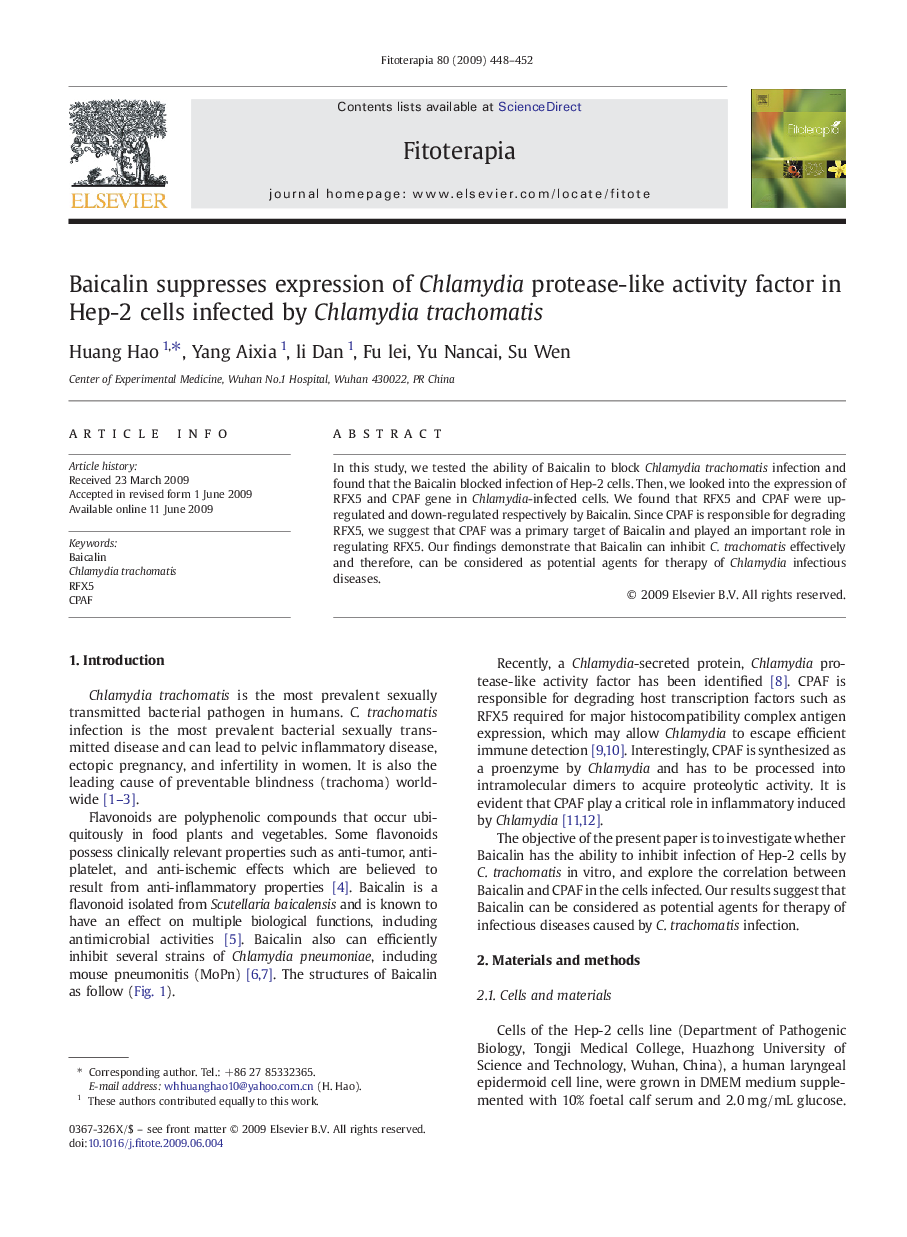| Article ID | Journal | Published Year | Pages | File Type |
|---|---|---|---|---|
| 2539506 | Fitoterapia | 2009 | 5 Pages |
In this study, we tested the ability of Baicalin to block Chlamydia trachomatis infection and found that the Baicalin blocked infection of Hep-2 cells. Then, we looked into the expression of RFX5 and CPAF gene in Chlamydia-infected cells. We found that RFX5 and CPAF were up-regulated and down-regulated respectively by Baicalin. Since CPAF is responsible for degrading RFX5, we suggest that CPAF was a primary target of Baicalin and played an important role in regulating RFX5. Our findings demonstrate that Baicalin can inhibit C. trachomatis effectively and therefore, can be considered as potential agents for therapy of Chlamydia infectious diseases.
Graphical abstractBaicalin is a flavonoid isolated from Scutellaria baicalensis and is known to have an effect on multiple biological functions, including antimicrobial activities. Our findings demonstrate that Baicalin can inhibit Chlamydia trachomatis in Hep-2 cells effectively and can be considered as potential agents for therapy of infectious diseases caused by C. trachomatis infection. The structures of Baicalin are as follows.Figure optionsDownload full-size imageDownload as PowerPoint slide
